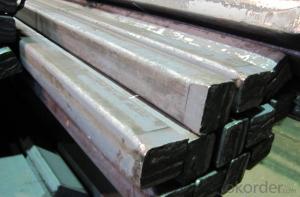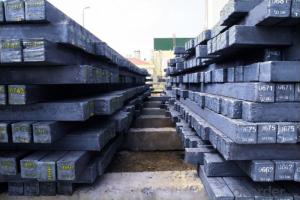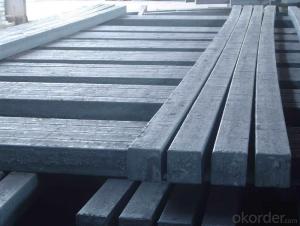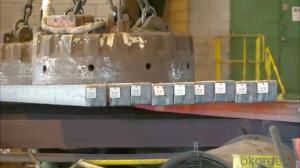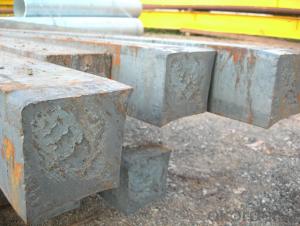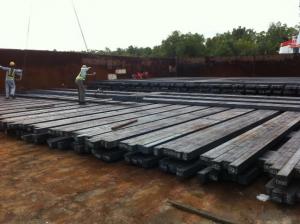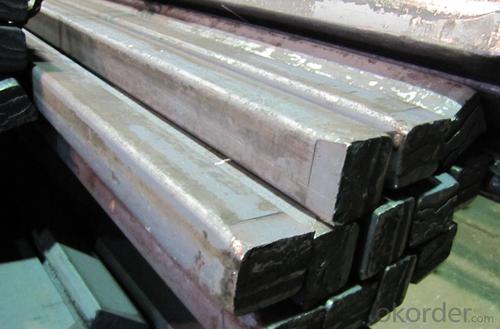Z41 BMP Rolled Steel Coil Construction Roofing Construction
- Loading Port:
- Tianjin
- Payment Terms:
- TT OR LC
- Min Order Qty:
- 100 m.t.
- Supply Capability:
- 10000 m.t./month
OKorder Service Pledge
OKorder Financial Service
You Might Also Like
Structure of Z41 BMP Rolled Steel Coil Construction Roofing Construction 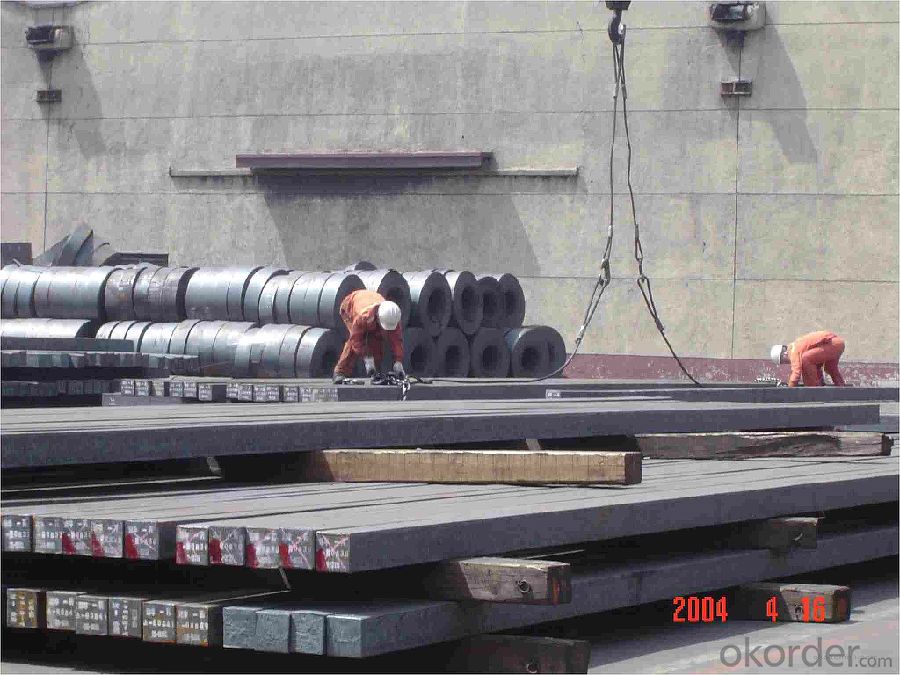
Description of Z41 BMP Rolled Steel Coil Construction Roofing Construction
PPGI is made by cold rolled steel sheet and galvanized steel sheets as baseplate, through the surface pretreatment (degreasing, cleaning, chemical conversion processing), coated by the method of continuous coatings (roller coating method),
and after roasting and cooling. Zinc coating: Z60, Z80, Z100, Z120, Z180, Z275, G30, G60, G90
Alu-zinc coating: AZ60, AZ80, AZ100, AZ120, AZ180, G30, G60, G90
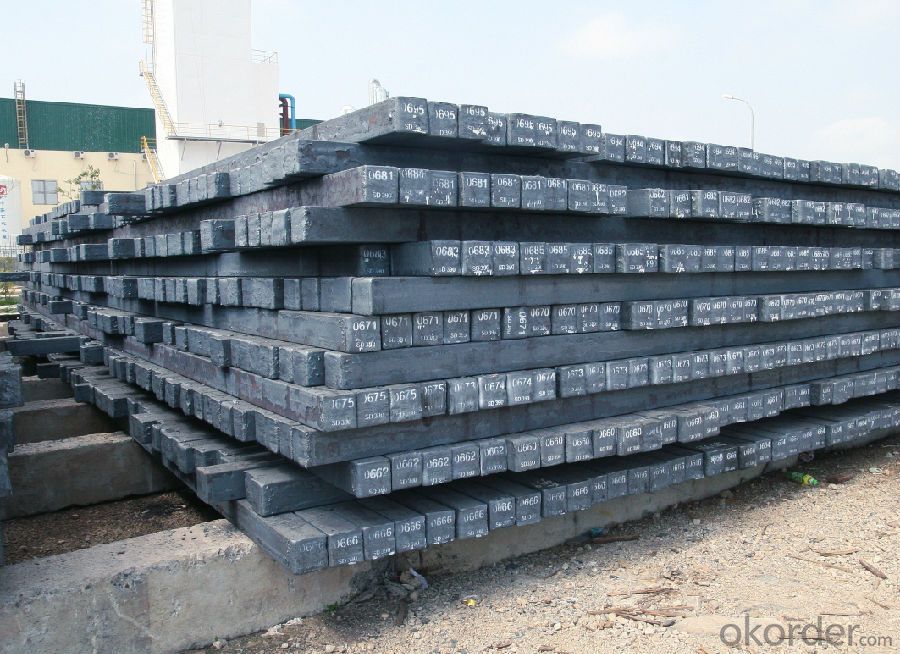
Main Feature of Z41 BMP Rolled Steel Coil Construction Roofing Construction
1) Excellent corrosion resistance: The zinc layer provides a good protection of Pre-painted Galvanizeed Steel Sheet.
2) High heat resistance: The reflective surface of the material aids in efficiently reflecting the sunlight away and in turn reducing the amount of heat transmitted. The thermal reflectivity converts into energy savings.
3) Aesthetics: Pre-Painted Galvanized steel sheet is available in plethora of patterns and multiple sizes as per the requirements that given by our customers.
4) Versatility: can be used in the various areas.Standard seaworthy export packing: 3 layers of packing, inside is kraft paper, water plastic film is in the middle and outside GI steel sheet to be covered by steel strips with lock, with inner coil sleeve.
Applications of Z41 BMP Rolled Steel Coil Construction Roofing Construction
1. Construction and building: roofing; ventilating duct; handrail; partition panel;etc.
2. Electric appliance: refrigerator; washing machine; refrigerator; DVD;etc.
3.Transportation: oil tank; road sign; etc.
4.Agriculture:barn; etc.
5.Others:vending machine; game machine; etc.  Specifications of Z41 BMP Rolled Steel Coil Construction Roofing Construction
Specifications of Z41 BMP Rolled Steel Coil Construction Roofing Construction
| Classified symbol | Yield Point Minimum N/mm2 | Tensile Strength Minimum | Elongation Minimum % | Application | ||||
| N/mm2 | Nominal Thickness mm (t) | |||||||
| JIS | Yogic | 0.25-0.4 | 0.4-0.6 | 0.6-1.0 | 1.0-1.6 | |||
| G3312 | specification | |||||||
| CGCC | CGCC | -205 | -270 | -20 | -21 | -24 | -24 | Commercial |
| CGCD | CGCD | --- | 270 | --- | 27 | 31 | 32 | Drawing |
| --- | CG340 | 245 | 340 | 20 | 20 | 20 | 20 | Structural |
| CGC400 | CG400 | 295 | 400 | 16 | 17 | 18 | 18 | Structural |
| CGC440 | CG440 | 335 | 440 | 14 | 15 | 16 | 18 | Structural |
| CGC490 | CG490 | 365 | 490 | 12 | 13 | 14 | 16 | Structural |
| CGC570 | CG570 | 560 | 570 | --- | --- | --- | --- | Structural |
| ASTM Designation | Yield Point Minimum | Tensile Strength Minimum | Elongation Minimum % | Application | Q/BQB 445-2004(China standard) | ASM A653/A653M | JISG 3312 | |
| ksi(MPa) | ksi(MPa) | TDC51D+Z | (CS TYPE A+Z) | CGCC | ||||
| A653(M)-99 CS TYPE A,B,C | --- | --- | --- | Commercial | TDC52D+Z | CGCD | ||
| A653(M)-99 FS | --- | --- | --- | Lock Forming | TS250GD+Z | (G250+Z) | - | |
| A653(M)-99 DS | --- | --- | --- | Drawing | TS300GS+Z | (G300+Z) | CGC 400 | |
| A653(M)-99 SS Grade33(230) | 33(230) | 45(310) | 20 | Structural | TS350GD+Z | (G350+Z) | CGC490 | |
| A653(M)-99 SS Grade37(255) | 37(255) | 52(360) | 18 | Structural | TS550GD+Z | (G550+Z) | CGC570 | |
| A653(M)-99 SS Grade40(275) | 40(275) | 55(380) | 16 | Structural | ||||
| A653(M)-99 SS Grade50(345) | 50(345) | 65(450) | 12 | Structural | ||||
| A653(M)-99 SS Grade80(550) | 80(550) | 82(570) | --- | Structural | ||||
FAQ of Z41 BMP Rolled Steel Coil Construction Roofing Construction
We have organized several common questions for our clients,may help you sincerely:
1. How Can I Visit There?
Our company is located in Tianjin City, China, near Beijing. You can fly to Tianjin Airport Directly. All our clients, from home or aboard, are warmly welcome to visit us!
2. How Can I Get Some Sample?
We are honored to offer you sample.
3. Why choose CNBM?
1, ISO, BV, CE, SGS approved.
2, Competitive price and quality.
3, Efficient service team online for 24 hours.
4, Smooth production ability(50000tons/month) .
5, quick delivery and standard exporting package.
6, Flexible payment with T/T, L/C, Paypal, Kunlun bank, etc .
- Q: Are there any alternative materials to steel billets in certain applications?
- Yes, there are several alternative materials to steel billets in certain applications. Some of these alternative materials include: 1. Aluminum: Aluminum is a lightweight and corrosion-resistant material that is commonly used as an alternative to steel in applications where weight reduction is important, such as in the aerospace industry. 2. Copper: Copper is a ductile and highly conductive material that is often used in electrical and plumbing applications. It is an alternative to steel billets in applications where high electrical conductivity is required. 3. Titanium: Titanium is a lightweight and high-strength material that is commonly used in applications that require both strength and corrosion resistance, such as in the automotive and aerospace industries. 4. Composite materials: Composite materials, such as carbon fiber reinforced polymers, are increasingly being used as alternatives to steel in applications where weight reduction and high strength are critical, such as in the construction of aircraft and high-performance sports equipment. 5. Plastic: Some applications that do not require high strength or durability can use plastic as an alternative material to steel billets. Plastic is lightweight, cost-effective, and can be easily molded into various shapes. It is important to consider the specific requirements of each application when choosing an alternative material to steel billets, as each material has its own unique properties and limitations.
- Q: How are steel billets used in the production of marine parts?
- Steel billets are an integral component in the production of marine parts. These billets, which are essentially semi-finished steel products, are used as the raw material for shaping and forming various marine components. To begin with, steel billets undergo a process called hot rolling, where they are heated to high temperatures and passed through rolling mills to produce different shapes and sizes. This hot rolling process helps in refining the steel's grain structure, enhancing its mechanical properties and making it suitable for marine applications. Once the desired shape and size are achieved, these billets are further processed through various techniques such as forging, machining, and welding to create specific marine parts. For instance, steel billets are used to manufacture propeller shafts, rudder stocks, and various structural components like hull frames and bulkheads. The high strength and durability of steel make it an excellent choice for marine parts, as it can withstand the harsh conditions of saltwater, extreme temperatures, and heavy loads. Additionally, steel billets can be easily customized to meet specific design requirements, ensuring the production of precise and reliable marine parts. Furthermore, steel billets also play a crucial role in the repair and maintenance of marine vessels. In cases where existing components need to be replaced, steel billets can be shaped and machined to match the exact specifications of the original parts. This ensures compatibility and seamless integration, allowing for efficient repairs and ensuring the continued operation of marine vessels. In conclusion, steel billets are essential in the production of marine parts as they provide the raw material necessary for shaping and forming various components. Their high strength, durability, and customization capabilities make steel billets an ideal choice for marine applications, ensuring the reliability and performance of marine vessels.
- Q: What are the different types of cleaning equipment used for steel billets?
- Steel billets commonly undergo cleaning using various types of equipment. These include: 1. Shot blasting machines: These machines propel small metal or mineral particles at high speed onto the surface of the billets, effectively eliminating rust, scale, and other contaminants, resulting in a clean and smooth surface. 2. Ultrasonic cleaners: Through the use of high-frequency sound waves, ultrasonic cleaning agitates a cleaning solution, effectively removing dirt, oil, and other contaminants from the billets' surface. This method is particularly useful for stubborn or hard-to-reach contaminants. 3. Acid pickling tanks: By immersing the billets in an acidic solution, acid pickling dissolves rust, scale, and other contaminants. After pickling, rinsing and drying are usually carried out. 4. Power washers: Power washers, also known as pressure washers, employ a high-pressure water spray to eliminate dirt, oil, and other contaminants from the billets' surface. This method is particularly effective for larger or heavier billets. 5. Mechanical cleaning brushes: Mechanical cleaning brushes, including wire brushes or abrasive pads, are commonly employed to manually scrub the billets' surface, removing loose dirt, rust, or scale. Typically used in conjunction with other cleaning methods. In determining the appropriate cleaning equipment for steel billets, factors such as the extent and type of contaminants, desired level of cleanliness, and the size and shape of the billets need to be considered. Different combinations of these cleaning methods may be utilized to achieve the desired outcome.
- Q: How do steel billets contribute to the overall strength of a finished product?
- The strength of the finished product heavily relies on the quality of the steel billets used. Steel billets form an essential part of the manufacturing process for various steel products and have a vital role in determining the final product's strength. To start with, steel billets are produced by continuously casting molten steel into solid blocks or forms. This casting method guarantees that the steel billets possess a consistent and uniform structure, which is crucial for maintaining the overall strength of the end product. The uniformity of the billets enables an even distribution of stress and load-bearing capacity throughout the final product. Furthermore, steel billets are typically made from high-quality steel alloys specifically selected for their superior strength properties. These alloys contain elements like carbon, manganese, and other alloying elements that enhance the overall strength and hardness of the steel. The utilization of high-quality steel billets enables manufacturers to create finished products with excellent tensile and yield strength, making them highly resistant to deformation, bending, and breaking. In addition, steel billets undergo various heat treatment processes such as quenching and tempering, which further enhance their strength. Quenching involves rapid cooling of the billets to increase their hardness, while tempering reduces brittleness and improves toughness. These heat treatment processes result in steel billets with improved mechanical properties, including higher yield strength and enhanced resistance to fatigue and impact. Moreover, the size and shape of steel billets also contribute to the overall strength of the finished product. The dimensions of the billets determine the final dimensions of the product, and larger billet sizes allow for a more significant and stronger end product. Similarly, optimizing the shape of the billets improves the load-bearing capacity and structural integrity of the finished product. To conclude, steel billets are crucial for the overall strength of the finished product. Through their uniform structure, high-quality alloys, heat treatment processes, and optimized size and shape, steel billets provide the necessary foundation for the production of robust and long-lasting steel products. Selecting the appropriate steel billets and ensuring their quality throughout the manufacturing process are essential steps in creating a finished product with exceptional strength and performance.
- Q: What are the different packaging options available for steel billets?
- Steel billets can be packaged in various ways to meet the specific needs and preferences of customers. Here are some commonly used packaging options: 1. Wooden Crates: To ensure safe transportation and storage, steel billets can be secured in sturdy wooden crates. These crates offer protection against moisture and physical damage. 2. Steel Frames: Another option is to package the steel billets using steel frames. These frames, made of strong and durable steel bars, securely hold the billets in place, providing stability and protection. 3. Plastic Wrapping: Plastic wrapping is also a viable packaging method. It involves tightly wrapping the billets with plastic film to shield them from dust, moisture, and scratches. 4. Wire Binding: Steel billets can be bundled together using steel wires, a common packaging choice. This method ensures stability and prevents movement during transportation. 5. Customized Packaging: Some customers may require customized packaging for their steel billets. This can involve using specific materials like foam or cardboard for added protection, or incorporating branding elements on the packaging. Ultimately, the choice of packaging depends on factors such as billet size and weight, mode of transportation, and specific customer requirements. It is crucial to consider factors such as protection, stability, ease of handling, and cost-effectiveness when selecting the most suitable packaging option for steel billets.
- Q: What is the role of steel billets in the production of railway wagons?
- Steel billets play a critical role in the production of railway wagons as they serve as the raw material for manufacturing various components, such as the wagon body, chassis, and structural elements. These billets are heated and shaped into desired forms through processes like rolling and forging, which enable the creation of strong and durable wagon parts. By providing the necessary strength and structural integrity, steel billets contribute to the overall safety, reliability, and longevity of railway wagons, ensuring they can withstand the demanding conditions and heavy loads encountered during their service on the railways.
- Q: What are the different types of steel billet shearing techniques?
- There are several types of steel billet shearing techniques, including guillotine shearing, rotary shearing, and flying shear.
- Q: How are steel billets used in the production of structural components?
- Steel billets are used in the production of structural components by being heated and molded into desired shapes such as beams, columns, and plates. These billets serve as the starting material, which is then further processed through rolling, forging, or extrusion to create strong and durable structural components used in various industries such as construction, automotive, and aerospace.
- Q: What are the properties and characteristics of steel billets?
- Steel billets are semi-finished products that possess several key properties and characteristics. Firstly, they have a rectangular or square cross-section with a relatively large size, typically ranging from 100x100mm to 200x200mm. They are manufactured through the process of continuous casting, which ensures their uniform composition and high quality. Steel billets exhibit excellent strength and hardness, making them suitable for various applications in the manufacturing industry. They have a high resistance to deformation, enabling them to withstand heavy loads and pressures. Additionally, they have good ductility and can be easily shaped or formed into desired products through processes like rolling or forging. Another important characteristic of steel billets is their excellent thermal conductivity, enabling efficient heat transfer during processing. They also have a good resistance to corrosion, which makes them suitable for outdoor applications and in environments with high humidity or exposure to chemicals. Overall, steel billets are versatile and robust materials with a wide range of applications in the construction, automotive, and machinery industries, among others. Their distinctive properties make them a preferred choice for various manufacturing processes, enabling the production of durable and reliable end products.
- Q: How do steel billets contribute to the manufacturing of telecommunications equipment?
- Steel billets are an essential raw material in the manufacturing of telecommunications equipment. They are used to form various components such as frames, housings, brackets, and mounting structures. The strength, durability, and versatility of steel make it an ideal choice for these applications, providing the necessary support and protection for sensitive electronic components. Additionally, steel billets can be easily machined, welded, and coated, allowing for precise customization and finishing required in telecommunications equipment.
Send your message to us
Z41 BMP Rolled Steel Coil Construction Roofing Construction
- Loading Port:
- Tianjin
- Payment Terms:
- TT OR LC
- Min Order Qty:
- 100 m.t.
- Supply Capability:
- 10000 m.t./month
OKorder Service Pledge
OKorder Financial Service
Similar products
Hot products
Hot Searches
Related keywords
